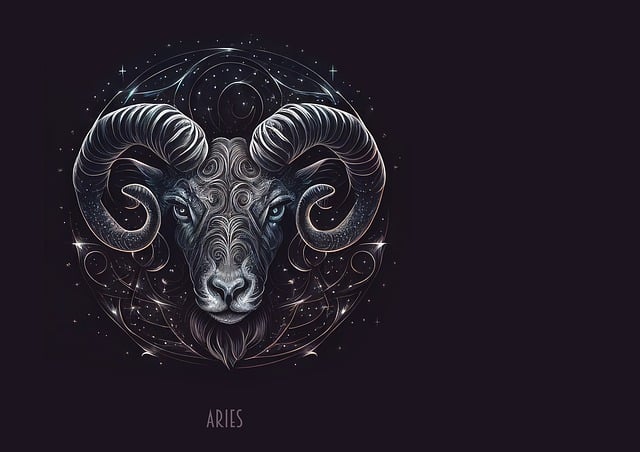Igniting Curiosity: The Allure of the Night Sky
The night sky has mesmerized humanity for millennia, with its vast tapestry of stars sparking wonder and a quest for knowledge. In today’s bustling world, gazing up at the heavens offers a respite, rekindling the age-old allure of celestial mysteries. Astronomy beginners experience this allure firsthand, standing under the starry expanse; it is an invitation to explore the universe. The sight of constellations, the glimmer of distant galaxies, and the dance of planets against the cosmic backdrop ignite a natural curiosity, turning the gaze upward night after night in anticipation of discovering the unknown. This fascination is the entry point for every aspiring astronomer, where each celestial event witnessed is not just a spectacle but a siren call to the secrets of the cosmos.
The Basics of Stargazing: Equipment and Preparation
To embark on a stargazing journey, enthusiasts need a few basic tools:
- Binoculars or a Telescope: Binoculars are a great starting point, being affordable and portable. A telescope offers a more detailed view, ideal for celestial events.
- Sky Maps or Apps: These help identify constellations, stars, and planets in the sky.
- Red Light Flashlight: Preserving night vision while reading sky maps or setting up equipment is essential, and red light is less disruptive to human eyes in the dark.
- Comfortable Seating and Clothing: Ensure a comfortable experience with suitable chairs and weather-appropriate attire.
- Notebook: Document observations to track progress and make the adventure more personal and educational.
Solar Eclipses: The Dance of the Sun and Moon
During a solar eclipse, the moon passes between Earth and the sun, casting a shadow over Earth’s surface. This celestial event can be classified into three types: total, partial, and annular. Total eclipses, where the moon completely obscures the sun, allow viewers to observe the sun’s ethereal corona. Partial eclipses occur when only a portion of the sun is covered, and annular eclipses result in a “ring of fire” appearance as the moon covers the sun’s center. For a truly memorable experience, enthusiasts must be positioned within the narrow path of totality. Eye protection is imperative to prevent damage from the sun’s rays. Witnessing a solar eclipse demands precise timing, but the profound moment when day turns to night is astronomically rewarding.
Lunar Eclipses: Earth’s Shadow Play
Lunar eclipses offer a spectacular view as Earth aligns between the Sun and the Moon, casting its shadow and temporarily darkening our natural satellite. Unlike solar eclipses, lunar eclipses are safe to observe without any protective eyewear. They occur at least twice a year and are visible from anywhere on the night side of Earth. Beginners should note:
- Penumbral Eclipse: Subtle and hard to detect; the Moon passes through Earth’s penumbral shadow.
- Partial Eclipse: A section of the Moon dips into Earth’s umbral shadow, showcasing a dramatic bite taken out of the Moon.
- Total Eclipse: The entire Moon is engulfed in Earth’s umbral shadow, often exhibiting a reddish hue called a “Blood Moon.”
Each phase of a lunar eclipse provides a unique learning opportunity about Earth’s orbital dynamics.
The Perseid Meteor Shower: A Celestial Firework Display
Each year in August, the Perseid meteor shower dazzles stargazers with its prolific display. Originating from the comet Swift-Tuttle, these meteors are known for their brightness and high speeds, lighting up the night sky as they burn up in Earth’s atmosphere. Observers can expect to see up to 60 meteors per hour, making it one of the most spectacular shows for beginners. To view the Perseids, find a dark, open sky away from city lights and look towards the constellation Perseus after midnight. No special equipment is needed—just a blanket and patience.
The Geminid Meteor Shower: Winter’s Cosmic Show
During the chilly winter evenings of mid-December, the Geminid meteor shower dazzles stargazers with its prolific display. Originating from the asteroid 3200 Phaethon, the Geminids are known for their bright, medium-speed meteors, making them easily observable under clear, dark skies. While active from December 4th to 17th, peak activity occurs around December 14th, where up to 120 meteors per hour can be sighted. With no need for telescopes, this celestial event is a remarkable experience for astronomy beginners. Dress warmly, find a spot away from city lights, and enjoy winter’s most spectacular cosmic show.
Planetary Conjunctions: When Worlds Align
A planetary conjunction occurs when two or more planets appear to come into close proximity to each other in the sky from our Earthly perspective. These celestial meet-ups are a visual treat for astronomy beginners, offering a rare opportunity to see the motion of our solar neighbors in real-time. Not only do conjunctions provide a striking tableau against the night sky, but they also afford a moment of wonder, contemplating the vast dance of the cosmos.
- Look out for conjunctions involving bright planets like Venus and Jupiter, which can be seen with the naked eye.
- Conjunctions often occur before dawn or after sunset, making them accessible events for all.
- Use star-gazing apps to predict their occurrence and to pinpoint the exact time when the planets will appear closest.
Witnessing the alignment of planets is an awe-inspiring introductory experience to the field of astronomy.
Comet Sightings: Icy Visitors from Afar
Comet sightings offer a mesmerizing astronomical experience as these icy bodies journey through our solar system. Originating from distant regions, they occasionally grace our skies, revealing glowing tails and comas. Observers should seek dark, clear skies for optimal viewing, and using a telescope or binoculars enhances the spectacle. Comets, such as the famous Halley’s Comet, pass by the Earth on predictable schedules, allowing enthusiasts to plan their observations. Each visit is unique, as a comet’s brightness and tail length vary depending on its proximity to the sun and Earth. The unpredictability of new comets adds excitement, as they might suddenly become visible to the naked eye, providing beginners with an unforgettable celestial show.
Supernova Remnants: Echoes of Stellar Explosions
Supernova remnants serve as spectacular evidence of a star’s explosive demise. These cosmic phenomena result from a supernova, which marks the death throes of a massive star. As the star explodes, it ejects massive amounts of energy and matter into space, forming an expanding shock wave. Over time, this shock wave sweeps up surrounding interstellar gas and dust, creating a dazzling, intricate structure – the supernova remnant.
Astronomy beginners should seek out famous remnants like:
- The Crab Nebula (M1), the remnant of a supernova observed on Earth in 1054.
- Tycho’s Supernova Remnant, spawned from a stellar explosion witnessed in 1572.
- The expansive Cygnus Loop, visible in small telescopes as a faint network of gossamer filaments.
These remnants serve as celestial classrooms, allowing observers to study the life cycles of stars and the cosmic forces at play.

Auroras: The Northern and Southern Lights Phenomenon
Auroras, commonly known as the Northern and Southern Lights, are a breathtaking celestial display. These luminous events occur when the Earth’s magnetosphere is disturbed by the solar wind, leading to complex light emissions in the polar skies. Observers can witness undulating curtains of green, pink, or violet light. While the Northern Lights, or Aurora Borealis, are often viewed from locations like Norway or Canada, the Southern Lights, or Aurora Australis, can be seen from Tasmania or New Zealand. These natural spectacles provide an ethereal experience for astronomy enthusiasts, making them a must-see phenomenon.
Key Resources and Apps for Astronomy Beginners
- Stellarium: A planetarium software that shows exactly what you see when you look up at the stars.
- SkySafari: An app offering a rich experience of the night sky, with detailed information about celestial bodies.
- Celestron SkyPortal: Designed for beginner stargazers, this app acts as a personal tour guide of the cosmos.
- Star Walk 2: An interactive astronomy guide that allows users to identify stars and planets by pointing their devices towards the sky.
- NASA App: Provides a wealth of information from NASA’s missions, including images, news, and more, useful for planning stargazing sessions.
- The Backyard Astronomer’s Guide: A comprehensive book giving practical advice on choosing equipment and observing celestial objects.
How to Capture These Events: Basics of Astrophotography
Astrophotography combines art and science, offering a way to document the beauty of the cosmos. Beginners should start by:
- Choosing the Right Equipment: A DSLR camera equipped with a tripod for stability is fundamental.
- Learning Manual Settings: Mastering manual focus and exposure settings is crucial for sharp images.
- Investing in a Good Lens: A wide-aperture lens captures more light, crucial for night sky photography.
- Finding a Dark Sky Location: Light pollution hinders visibility, so seek out dark, rural settings.
- Practicing Patience and Timing: Astrophotography requires waiting for perfect conditions and timing shots accurately.
Joining the Community: Astronomy Clubs and Star Parties
For those beginning their journey into astronomy, the camaraderie and collective knowledge found in astronomy clubs and at star parties can be invaluable. These communities provide:
- Expert Guidance: Seasoned astronomers often lead clubs, offering mentoring to newcomers.
- Equipment Sharing: Clubs typically have telescopes and gear that members can use.
- Organized Viewing Events: Regular star parties offer a chance to observe celestial events with others.
- Educational Opportunities: Workshops and talks can enhance understanding of astronomy.
- Social Connection: Clubs and events foster social bonds over a shared passion for the stars.
Joining an astronomy club or attending a star party can greatly enrich the experience of celestial observation for beginners.
Conservation Considerations: Combating Light Pollution for Better Views
For astronomy enthusiasts seeking resplendent night skies, light pollution poses a significant barrier. This excess brightness obscures celestial wonders, diminishing the majestic views that novice stargazers aspire to witness. Municipality regulations can help by enforcing ‘dark sky’ policies, that include:
- Utilizing fully shielded, downward-facing outdoor lighting
- Adopting lighting with warm color temperatures
- Scheduling outdoor lights to on when necessary
- Engaging communities through educational programs about light pollution’s impact
By adopting these approaches, stargazers can contribute to preserving the nocturnal environment, ensuring that the awe-inspiring spectacles of the cosmos remain visible for generations to come.





















0 Yorum